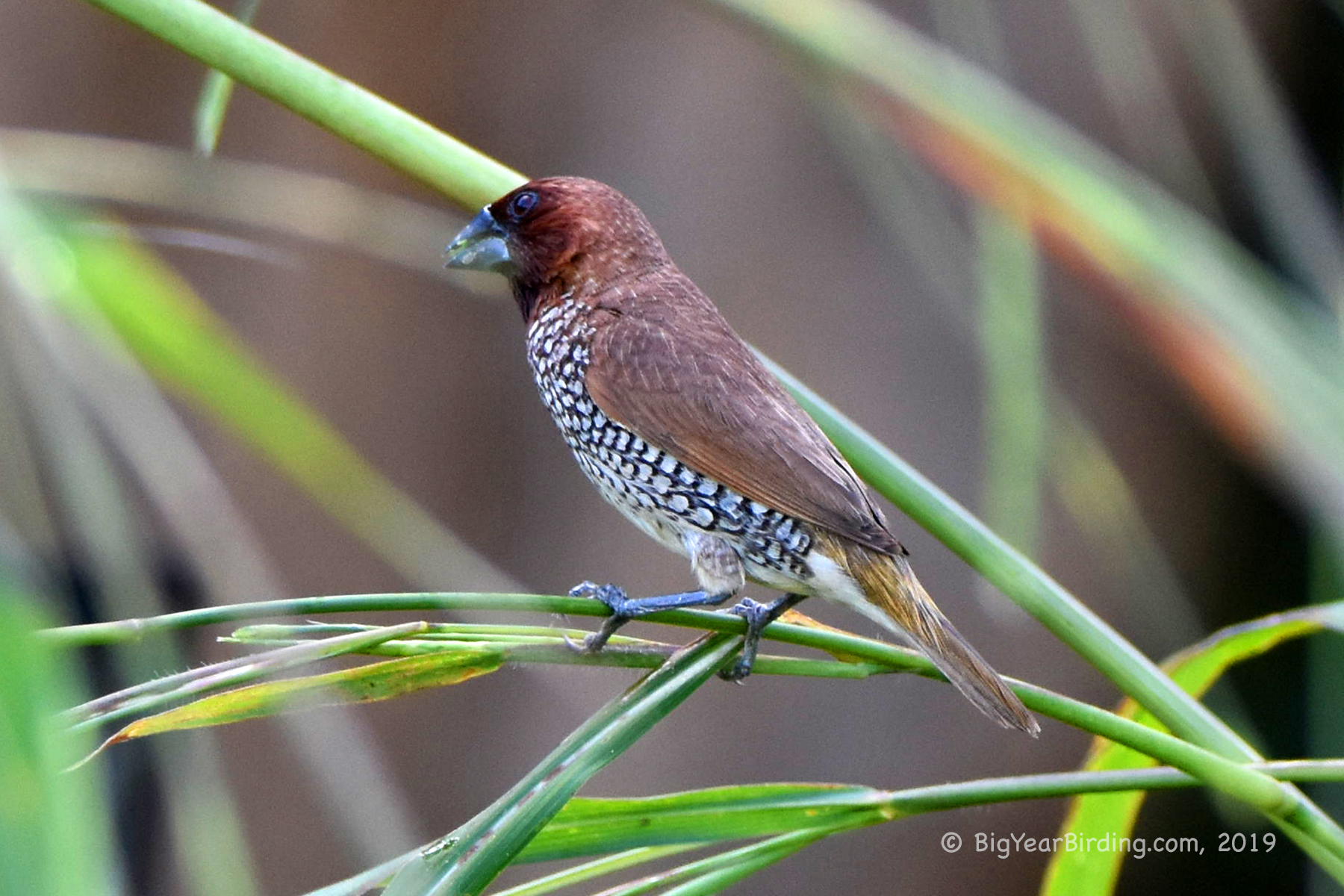The Scaly-breasted Munia, also known as the spotted munia, is a small passerine bird belonging to the family Estrildidae. It measures around 4.3 inches in length and weighs between 0.35 and 0.45 ounces, with males generally being slightly larger than females. The bird’s plumage is mainly brownish-grey, with a distinctive pattern of scales on its breast and upper body, as well as a black bill and tail. The scaly-breasted munia’s wings are short and rounded, which makes it a weak flier, relying instead on hopping and flitting movements to navigate through its habitat.
This species is native to South and Southeast Asia, and is commonly found in grasslands, scrublands, and agricultural areas. In some areas, it is considered an agricultural pest due to its feeding habits, which mainly consist of seeds and grains. The scaly-breasted munia is generally a non-migratory species, with populations in more northern regions sometimes undertaking seasonal movements to escape harsh weather conditions.
One of the distinguishing features of the scaly-breasted munia is its distinctive scaly breast pattern, which makes it easy to identify in the field. Additionally, its small size and rounded wings make it easily distinguishable from other similar-looking birds. During breeding season, males will display a bright yellow patch on their forehead, making them easier to spot. The bird’s call is a series of sharp, metallic chirps that are repeated several times.
Although the scaly-breasted munia is considered a non-migratory species, some populations have been observed moving southward during the winter months, particularly in areas such as northern India and Nepal. These movements are generally associated with the search for food and more favorable weather conditions. However, the species is considered to have a relatively stable population, and is not currently considered to be at risk of extinction.

